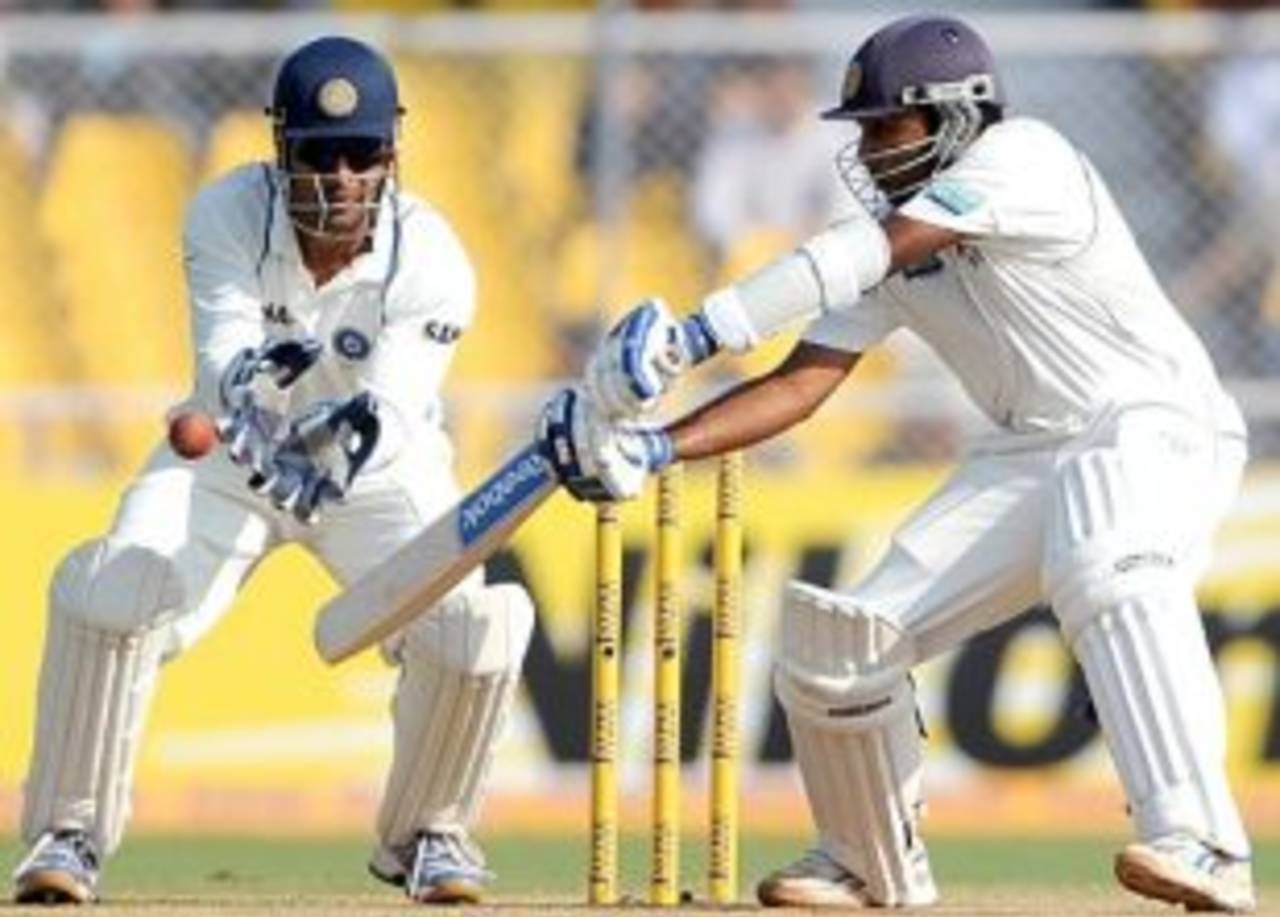Muddled thinking costs India
India lacked clarity in their thought process, and the Jayawardenes - Mahela and Prasanna - took full toll
Cricinfo staff
18-Nov-2009

Mahela Jayawardene capitalised on India's defensive tactics to put Sri Lanka on top • AFP
The picture became pretty much clear in the first 10 overs of the day, when MS Dhoni got Harbhajan Singh and Amit Mishra into the act. The idea may have been good but not the execution: neither bowler hustled, challenged, teased or troubled the batsman, and the captain didn't back them with attacking fields. The only beneficiaries were the Sri Lankans, who built on the momentum established on the second day by Tillakaratne Dilshan.
The spinners' reluctance to go for the kill only exposed India's plans to wait for the second new ball. This defensive move, in turn, laid bare India's muddled thought process: should they attack, should they defend? Answers were not forthcoming on the day because no one from the Indian team turned up at the media conference.
It wasn't just the spinners. Even when the second new ball was taken, Zaheer Khan and Ishant Sharma failed to get optimum swing compared to their less experienced counterparts Chanaka Welegedara and Dammika Prasad. Though Zaheer remained the day's most consistent bowler, he failed to dominate the batsmen. He did rattle Thilan Samaraweera in the morning in a five-ball burst of probing fast bowling that eventually led to the batsman losing his composure, and his wicket, in the next over from Ishant, but he found it difficult to sustain that pressure for the rest of the day. And that proved costly for India.
More importantly, what was missing was the clarity in their thought process. It was hard to understand why Dhoni persisted with a deep point for Harbhajan who, whenever he strayed outside off, was cut fine or steered past the empty third man pocket. At the opposite end Amit Mishra tried hard to bowl into the rough to force the batsman to commit the error. But the Jayawardenes - Mahela and Prasanna - remained patient, having seemingly decoded Dhoni's plans. "They were trying to not give us a bigger lead," Jayawardene said.
The Lankans were only too happy to play the waiting job. "You can lose wickets in that manner if you played too many shots but it was important we didn't do that," Jayawardene said. "We waited for the loose ball and waited for the opportunity."
The effect was a calculated assault: pre-lunch they made 100 runs off 26.2 overs at a run-rate of 3.82, losing the only two wickets in the day; in the second session, the Jayawardenes scored 108 in 23.4 overs at 4.62; in the final session, when the Indians bowled consistently outside leg stump from round the wicket to staunch their progress, the Lankans still managed to keep the rate at a feasible three runs per over. "We were a bit too slow towards the end," Jayawardene conceded, "but the important thing was not to lose too many wickets … and if we have ample time we can build on the lead."
Another trick Dhoni missed was setting the daring 8-1 off-side field and giving his fast bowlers free rein, as he had done successfully in equally demanding circumstances in last year's Nagpur Test against Australia.
In that game, India looked set for a massive first-innings total but were undone by the unassuming Jason Krejza. In response Australia were hurtling towards the Indian score at more than four runs an over when Dhoni adopted the 8-1 field, raised eyebrows but turned the game in India's favour. Today it might have been the heat, or the placid nature of the pitch, or even his exhausted fast bowlers, that prevented Dhoni from repeating that strategy.
If India were indeed trying to take wickets, though, why not suffocate the batsman first by setting a close ring of fielders? Blaming the slow pitch would be a lame excuse - with attacking lines and consistent lengths Sri Lanka might have had a stiffer task at hand instead of sitting pretty on a sizeable 165-run lead.
Jayawardene understood the overall strategy. "They had to be careful not to give us a bigger lead…you can attack and give away too many runs but at the same time create opportunities," he explained.
The match is still open, though. Jayawardene was confident about Sri Lanka's prospects of notching their maiden Test triumph on Indian soil if they stick to their plans, but wary of the possibilities. "Things can happen on a fourth- or fifth-day wicket. Teams under pressure can create opportunities as well. We are on top at the moment but if we suddenly lose wickets it could be a different ball game."